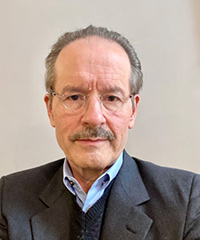
Lewis Cantley, Ph.D.
Lew Cantley is widely known for his many seminal discoveries in signaling and metabolism, including the identification of PI3 kinase and its role in transformation, as well as groundbreaking work unraveling the complexities of protein kinase signaling--his work has had major impact across virtually every aspect of cancer cell biology. For those of you who are new to the department, Lew was a Cell Bio faculty member from 1992-2003 before transitioning to the then newly formed HMS Department of Systems Biology in 2003. In 2012, Lew was recruited to Weill Cornell in New York City, where he served as Director of the Meyer Cancer Center. There, he built a remarkable program focused on the intersection of metabolism and signaling in cancer.
Lew rejoined the Department of Cell Biology at HMS and the DFCI-Cancer Cell Biology in 2022.
Dana Farber Cancer Institute
Cancer Cell Biology
J Biol Chem
View full abstract on Pubmed
Proc Natl Acad Sci U S A
View full abstract on Pubmed
Biochim Biophys Acta
View full abstract on Pubmed
J Biol Chem
View full abstract on Pubmed
J Biol Chem
View full abstract on Pubmed
J Biol Chem
View full abstract on Pubmed